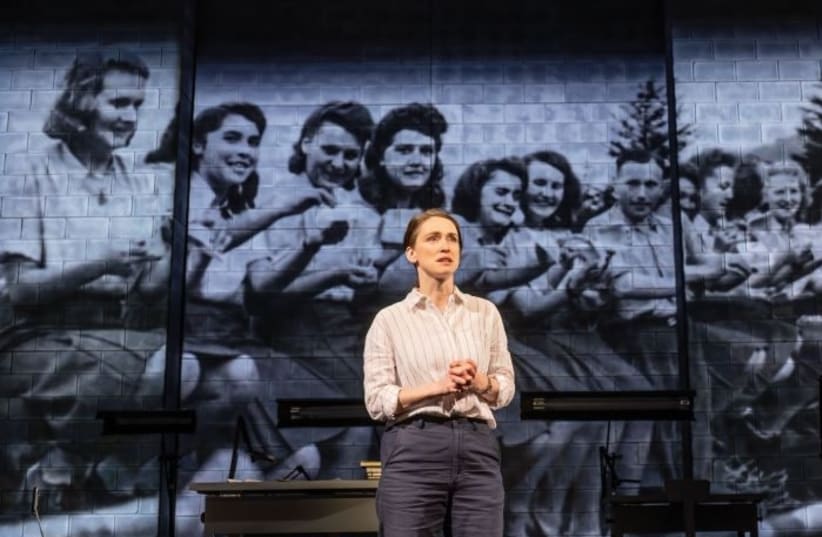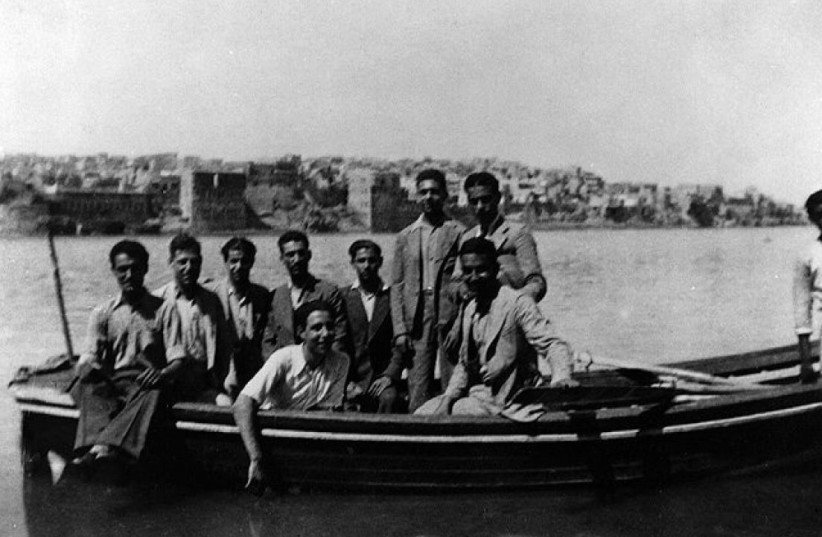One snowy morning on a recent visit to Chicago, my aunt opened a trunk and handed me a large binder. It was filled with handwritten notes that had been sent to my grandfather by public high school students from the South and West sides of Chicago after he shared his personal story of surviving the Holocaust in their classrooms and school libraries.
My maternal grandfather was the sole survivor of his family, escaping his birthplace of Krements, Ukraine, by bicycle. He left behind three siblings, two healthy parents, a large extended family, and an entire world that was obliterated on a local soccer field by a mobile Nazi paramilitary unit responsible for mass killings, primarily through shootings.
As we approach 100 years since the rise of Nazism in Germany, Holocaust education seems more essential than ever. However, as the granddaughter of a survivor and the leader of JIMENA, a San Francisco-based Sephardic Jewish organization dedicated to educating and advocating on behalf of the one million Jewish refugees from the Middle East and North Africa, the impact of Holocaust education leaves me with many questions.
Importance of genocide studies
The world has changed significantly since the 1990s, when my grandfather and many other Holocaust survivors were busy sharing testimonies in public schools throughout the United States. Students and educators now have no shortage of modern-day conflicts to study, including the 2003 Darfur Genocide in Sudan, the 2014 Yazidi genocide, and the Syrian Civil War, which started in 2011 and has resulted in 500,000 deaths.
The demographics of public school students in America have also changed, and today BIPOC (Black, Indigenous, and people of color) students are a majority. This necessitates the education of diverse demographics of students whose own collective histories are also colored by ethnic, racial, and religious conflicts and traumas. These two facts must be factored in when thinking strategically about future Holocaust and genocide education initiatives.
Today, the moral and academic imperative of teaching the components of genocide, the conditions that enable them, the laws surrounding them, the history of them, and the definitions that have broad international acceptance, is of critical importance. Perhaps if students and teachers received more rigorous education in the general field of genocide studies, they would be able to more critically analyze information about genocide and discern when to distinguish between actual genocide and misinformation, the likes of which flood students’ social media feeds daily.
They would know that drawing comparisons between Israelis and the genocidal Nazis is one of the most egregious contemporary antisemitic messages currently circulating – reminding us that perhaps we need to take a very difficult but critical look at Holocaust education in 2024.
THE ONGOING and frightening surge of antisemitism on college campuses begs us to ask: What could we be doing differently to make Holocaust and antisemitism education more effective in countering contemporary antisemitism?
The 2020 Claims Conference’s groundbreaking study, “US. Millennial Holocaust Knowledge and Awareness Survey,” the first-ever 50-state survey on Holocaust knowledge among millennials and Gen Z-ers, found that 63% of respondents do not know that six million Jews were murdered, and nearly 20% of millennials and Gen Z-ers in New York believe the Jews caused the Holocaust.
In Illinois, where my grandfather gave his talks, 54% of respondents couldn’t name a concentration camp or ghetto, despite Illinois being the first state in the country to mandate Holocaust education in public schools.
Holocaust education, as it currently stands, primarily, and rightfully, focuses on the experiences of Jews in 1930s and ’40s Europe and fails to address how Nazism infiltrated and continues to impact countries outside of Europe. If Holocaust education is to continue evolving beyond teaching the Holocaust for the sake of historical memory, but also as a means to teach about and counter contemporary antisemitism, it must include teaching students the stories and histories of Middle Eastern and North African Jews.
Students should learn about the Nazi-inspired Farhud in Iraq, a two-day pogrom in 1941 that marked the beginning of the end of Jewish life in Baghdad, which was 40% Jewish at the time, and is often referred to as the Kristallnacht of the Middle East.
Students should learn about the Vichy-Nazi labor camps spread throughout North Africa, including the Bedeau, Ain El Ourak, and Bou Arfa camps in Algeria and the camps of Giado, Sidi Azaz, and Bukbuk in Libya.
Students should learn about the role Mein Kampf had in influencing the sweeping Arab nationalism that took over the Middle East and North Africa in the 20th century, and where there remains a demand for Arabic translations of the book.
We can no longer ignore or fail to teach our students the Nazi roots of the Muslim Brotherhood – the father organization of Hamas, the historical and violent criminalization of “Zionism” and “Zionists” in the Arab world, and the ongoing belligerent and systemic Holocaust denial by the Islamic Republic of Iran.
EXPANDING HOLOCAUST education to include Jews from North Africa and the Middle East can directly teach students that Jews are a diverse people, shattering some of the insidious stereotypes common among young people today.
As it stands, Holocaust education primarily projects the image of Jews as a European ethnic-religious group native to Europe, essentially centering Jewish history and experience in Europe while ignoring the reality that Holocaust victims and survivors descend from an indigenous Middle Eastern community in the Diaspora.
This has helped fuel the antisemitic propaganda message of Jews being “white, colonial, usurpers” in the Middle East, despite the fact that Nazi racism was built on a pseudo-scientific idea that Jews are a “non-white, non-European, inferior race.” Our students need a much fuller picture of who Jews are, what contemporary antisemitism looks like, and how much of it is rooted in Nazi ideology that spread like wildfire in North Africa and the Middle East, where it continues to burn.
The authors of the US National Strategy to Counter Antisemitism agree and have made this a primary goal in the plan, including the following statement: “In addition to learning about the horrors of the Holocaust, students should learn about global histories of antisemitism. This should include histories of antisemitism experienced by Sephardic and Mizrahi Jews – who trace their ancestry to Spain, the Middle East, and North Africa – and their stories of exclusion, and persecution… Educators need readily available quality resources to enable such education.”
As the granddaughter of a survivor who lives with the trauma of the Holocaust in my DNA, my hope is that all those invested in Holocaust education will agree that we need to be teaching the Holocaust not only to memorialize the six million Jewish victims but to strategically and proactively counter contemporary antisemitism as it stands today.
Tackling contemporary antisemitism and teaching its historical connections to Nazi influence in the Middle East and North Africa has never been more important.
It is time for all of our students to learn why, after thousands of years of continuous Jewish life in countries throughout the Middle East and North Africa, a number of these countries are now “judenrein” or Jew-free.
The writer is the executive director of JIMENA: Jews Indigenous to the Middle East and North Africa, an organization dedicated to achieving universal recognition of the heritage, history, and rights of Middle Eastern and North African Jewish refugees and their descendants.

